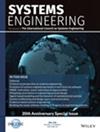考虑运行环境不确定性的基于测试覆盖率的软件可靠性增长模型
IF 1.6
3区 工程技术
Q4 ENGINEERING, INDUSTRIAL
引用次数: 2
摘要
软件可靠性是软件系统的标准关键固有特性之一。测试覆盖函数(TCF)是识别软件测试完整性和有效性的重要参数。它被定义为截至时间t已测试的代码的比例。为了捕捉一段时间内检测到的故障数量的动态行为,文献中使用了几种分布作为TCF,即S形、拐点S形、逻辑、对数逻辑、威布尔、瑞利、Erlang和对数指数。然而,由于所收集数据的复杂性和模糊性,这些分布不足以描述TCF的实际行为。本研究提出了两个软件可靠性增长模型(SRGM),将广义拐点S形(GISS)分布作为TCF。这些模型是在完美和不完美的调试环境中开发的,同时考虑了故障排除效率、错误生成和操作环境中的不确定性。为了分析有效性,然后用六个失效数据集对所提出的模型进行了测试。与文献中现有的模型相比,选择GISS分布作为TCF改进了软件可靠性估计。最后,还进行了单参数和多参数灵敏度分析,并在此基础上检测出了关键参数。所提出的模型可能有助于系统分析员预测一些软件系统的各种参数。本文章由计算机程序翻译,如有差异,请以英文原文为准。
Testing coverage‐based software reliability growth model considering uncertainty of operating environment
Software reliability is one of the standard critical inherent characteristics of software systems. The testing coverage function (TCF) is a significant parameter for identifying the completeness and effectiveness of software testing. It is defined as the proportion of the code that has been tested up to time t. To capture the dynamic behavior of the number of faults detected over a period of time, several distributions, namely S‐shaped, inflection S‐shaped, logistic, log‐logistic, Weibull, Rayleigh, Erlang, and logarithmic exponentiated, have been used as TCF in literature. However, these distributions are not sufficient to describe TCF's practical behavior due to complexity and vagueness in the collected data. This study proposes two software reliability growth models (SRGMs), which incorporate the generalized inflection S‐shaped (GISS) distribution as TCF. The models have been developed in perfect and imperfect debugging environments while considering fault removal efficiency, error generation, and uncertainty in the operating environment. To analyze the effectiveness, the proposed models are then tested with six failure data sets. The choice of GISS distribution as a TCF improves the software reliability estimation in comparison with the existing models in the literature. Finally, single and multiple parameters sensitivity analysis also has been done and based on it, the critical parameters have been detected. The proposed models may be helpful for the system analyst to predict various parameters about some software systems.
求助全文
通过发布文献求助,成功后即可免费获取论文全文。
去求助
来源期刊

Systems Engineering
工程技术-工程:工业
CiteScore
5.10
自引率
20.00%
发文量
0
审稿时长
6 months
期刊介绍:
Systems Engineering is a discipline whose responsibility it is to create and operate technologically enabled systems that satisfy stakeholder needs throughout their life cycle. Systems engineers reduce ambiguity by clearly defining stakeholder needs and customer requirements, they focus creativity by developing a system’s architecture and design and they manage the system’s complexity over time. Considerations taken into account by systems engineers include, among others, quality, cost and schedule, risk and opportunity under uncertainty, manufacturing and realization, performance and safety during operations, training and support, as well as disposal and recycling at the end of life. The journal welcomes original submissions in the field of Systems Engineering as defined above, but also encourages contributions that take an even broader perspective including the design and operation of systems-of-systems, the application of Systems Engineering to enterprises and complex socio-technical systems, the identification, selection and development of systems engineers as well as the evolution of systems and systems-of-systems over their entire lifecycle.
Systems Engineering integrates all the disciplines and specialty groups into a coordinated team effort forming a structured development process that proceeds from concept to realization to operation. Increasingly important topics in Systems Engineering include the role of executable languages and models of systems, the concurrent use of physical and virtual prototyping, as well as the deployment of agile processes. Systems Engineering considers both the business and the technical needs of all stakeholders with the goal of providing a quality product that meets the user needs. Systems Engineering may be applied not only to products and services in the private sector but also to public infrastructures and socio-technical systems whose precise boundaries are often challenging to define.
 求助内容:
求助内容: 应助结果提醒方式:
应助结果提醒方式:


